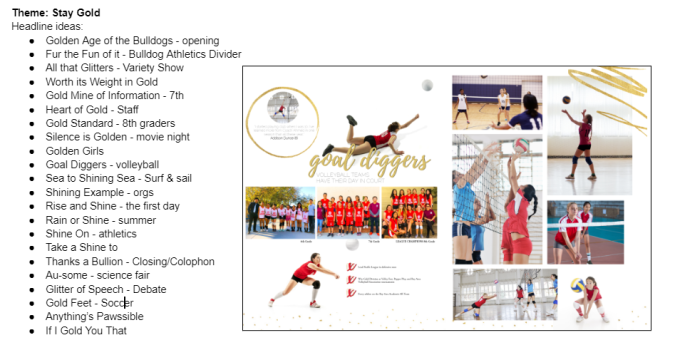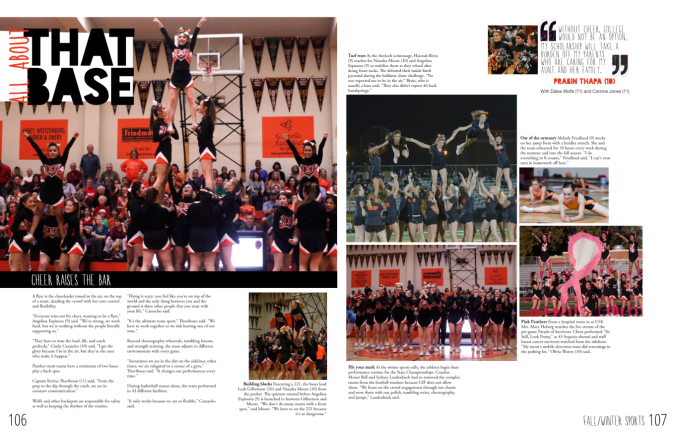
Erikalinpayne
February 7, 2023
2
Min Read Time

Not only is it a part of the dominant element of your spread’s hierarchy, but headlines also help organize the yearbook by providing a visual cue and structure for the content. An effective headline can help a reader quickly understand the content of a page and decide if they want to read more. (They should!) When writing headlines for your yearbook, follow these five guidelines.
The tone of your headlines should match the tone of the yearbook, whether it is lighthearted, serious, or something in between.
Many advisers begin the theme development process with an idiom dictionary nearby to create a lexicon for the year. By incorporating keywords and phrases from the yearbook theme into the headlines, designers create a consistent and cohesive story, which ultimately strengthens your theme.
Take a look at this example: with the Treering Theme Stay Gold in mind, the editorial staff looked at all the phrases using gold and built out a list. They then assigned potentials to spreads. Notice how gold is frequently used, as are synonyms such as shine and glitter.

Focus your yearbook headlines and limit them to no more than a few words which accurately reflect the content of the story they introduce.
Advisers, here are some exercises that can help students produce stronger headlines:
Have students work in groups to critique headlines written by their peers. Collaboratively, students learn to identify strong and weak yearbook headlines and develop a critical eye for headline writing.
Collect headlines from various sources (some ideas are below in section five) and analyze them for clarity, conciseness, and relevance to the content. This exercise can help students understand the importance of writing headlines that accurately reflect the content and grab the reader's attention.
To help students learn to refine their headline-writing skills and make their headlines more effective, have students write several headlines for a given story or event and then revise them to make them more concise, clear, and attention-grabbing.
When it comes to all things style, the Associated Press Stylebook sets the rules for copy, abbreviations, and formatting.
Make your English department swoon with literary techniques such as puns or alliteration if appropriate.
While "Football" is a straightforward and accurate way to describe the subject matter, using it as a headline for a story about the football team in a yearbook may not be the most engaging option. To make the headline stand out and capture the reader's attention, it's often better to use wordplay or a more descriptive phrase that goes beyond just the basic name of the subject.
For example, instead of simply using "Football" as the headline, you could use an alliteration that showcases your mascot such as “Lions on the Line” or "Touchdown Titans."
You could even use something from the story copy to tie the spread together: below this cheer spread's feature story is about the relationship between cheer flyers and bases.

Consider the current events and trends that are relevant to the yearbook and include them in your headlines. From Homecoming (Game of Thrones) to personality profiles of faculty (How I Met Your Teacher), you can get creative in the Heartland (any location on campus, such as the quad, where the whole school gathers). See what we did there?
Find inspiration by looking at
Following these tips and finding your headline groove will strengthen your yearbook theme and tell the story of your year. For additional writing tips, check out these blogs: